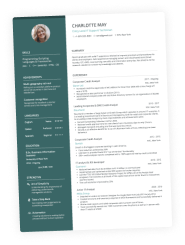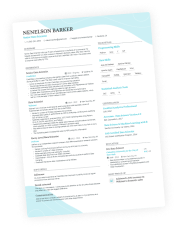At first glance, “Dear Sir or Madam” might seem like a respectful and familiar way to open your cover letter. But in today’s job market, it often comes across as outdated and overly generic. While it’s unlikely to disqualify your application, it can suggest a lack of attention to detailor that the same letter is being sent to multiple employers.
A greeting is more than a formality—it’s your first chance to demonstrate professionalism, intent, and care. When chosen thoughtfully, it can help establish a stronger connection from the very beginning.
In this article, we’ll explore whether “Dear Sir or Madam” still has a place in modern cover letters. We’ll also look at how hiring managers tend to perceive it, and which alternatives are better aligned with current expectations.
Key takeaways
- “Dear Sir or Madam” often feels impersonal and out of step with modern hiring expectations.
- Choosing a more specific greeting shows attention to detail and genuine interest.
- If a name isn’t available, try alternatives like “Dear Hiring Manager” or “Dear [Team Name]”.
- A bit of research—on the job posting, company site, or LinkedIn—can usually uncover a better option.
- Even small touches like your greeting can set the tone and help your letter stand out.
Drop your resume here or choose a file.
PDF & DOCX only. Max 2MB file size.
Why “Dear Sir or Madam” no longer works
Once standard in formal business correspondence, “Dear Sir or Madam” was a respectful fallback when the recipient’s name wasn’t known. But hiring norms have changed.
Today, that same phrase often reads as distant or outdated—especially in industries that prioritize authentic communication. Recruiters may not be offended by it, but many see it as a missed opportunity. It signals you may be sending the same letter to every company.
That doesn’t mean you’ve failed if you’ve used it before. It just means there are better ways to open a letter. Let’s take a look at some examples.
The psychology behind it
Part of the problem is that “Dear Sir or Madam” lacks a sense of relevance. Studies in attention and behavior show that we’re more likely to engage with messages that feel personal—like when we instinctively tune in after hearing our name in a noisy room.
A generic greeting doesn’t trigger that same response. Without a clear signal that your message is meant for someone specific, your letter risks being read with less attention—or dismissed entirely.
Better greetings for your cover letter (and what to avoid)
If you don’t have a contact name, you still have better options than “Dear Sir or Madam.” These greetings reflect a more thoughtful and intentional approach, and they help show that you’ve put effort into tailoring your message.
Choosing the right salutation might seem like a small detail, but it carries more weight than you’d expect—especially when your cover letter length is only a few short paragraphs.
Here are several alternatives, along with when to use each.
If you know the recipient’s name
Use it directly along with the title of the recipient. It’s the most respectful and effective way to begin. Not sure about titles or pronouns? Using the full name is a safe choice that avoids assumptions.
- Dear Jordan Lee,
- Dear Dr. Patel,
- Dear Ms. Martinez,
If you don’t have a name, but know the role or team
It still shows that you’ve put thought into your greeting—and that you understand who you’re writing to, even if you don’t have a specific name.
- Dear Hiring Manager,
- Dear Marketing Team,
- Dear Customer Success Lead,
Using a relevant role or department (even without a name) shows more effort than a generic greeting.
If no details are available at all
This option should be your last resort. It's acceptable in rare formal situations, but not ideal for most job applications.
- To Whom It May Concern,
Whenever possible, use the name of the person you’re writing to. If you don’t know it, insert a generic but appropriate title, such as Dear Hiring Manager or Dear Human Resources Professional.
Greg Faherty
Not sure how to end your letter on the right note? Here’s how to sign off a cover letter—with examples that work.
How to find a name when it’s not in the job post
If the job post doesn’t mention who you’re writing to, don’t default to “Dear Sir or Madam” just yet. A bit of research can often lead you to a better greeting—one that feels more intentional.
Here are a few quick ways to uncover the right contact (or at least a stronger alternative):
Where to look when no name is listed
- Scan the job post again: Sometimes a name is hidden in the email or description.
- Check the company’s website: The “About” or “Team” page might list department heads or managers.
- Search LinkedIn: Use the company name and department to find someone likely to read your application.
- Email HR (briefly): A short, polite message asking who to address your cover letter to shows initiative.
Even if you don’t find a name, you’ll often uncover a job title or team you can use. That small effort? It helps your letter feel more thoughtful and more likely to be remembered.
Do hiring managers really notice your greeting?
In short, yes.
Some will skip right past it if your letter is otherwise strong. But others see it as a signpost—a quick clue about whether you’ve personalized your application or sent a template to dozens of jobs.
Recruiters across platforms like Reddit, Quora, and LinkedIn say they appreciate a greeting that feels intentional. It doesn’t have to be perfect—it just has to feel like you wrote it for this job.
A personalized greeting won’t win you the role on its own, but it can help your letter feel more thoughtful and human.
Conclusion
In a short cover letter, every line matters—starting with the greeting. A thoughtful opening sets the tone for the concise, intentional message that follows.
“Dear Sir or Madam” isn’t wrong, but in most cases, it isn’t your best option either. By using a name, title, or team, you show that you’ve made an effort—and that can set the right tone from the start.
You don’t have to get everything right. But you do want to sound like you care. And when you start strong, you invite the hiring manager to keep reading.
Build a stronger opening—try our Cover Letter Builder and get personalized feedback in minutes.




